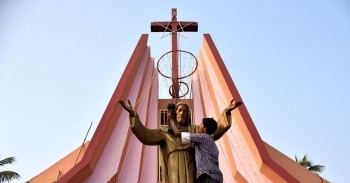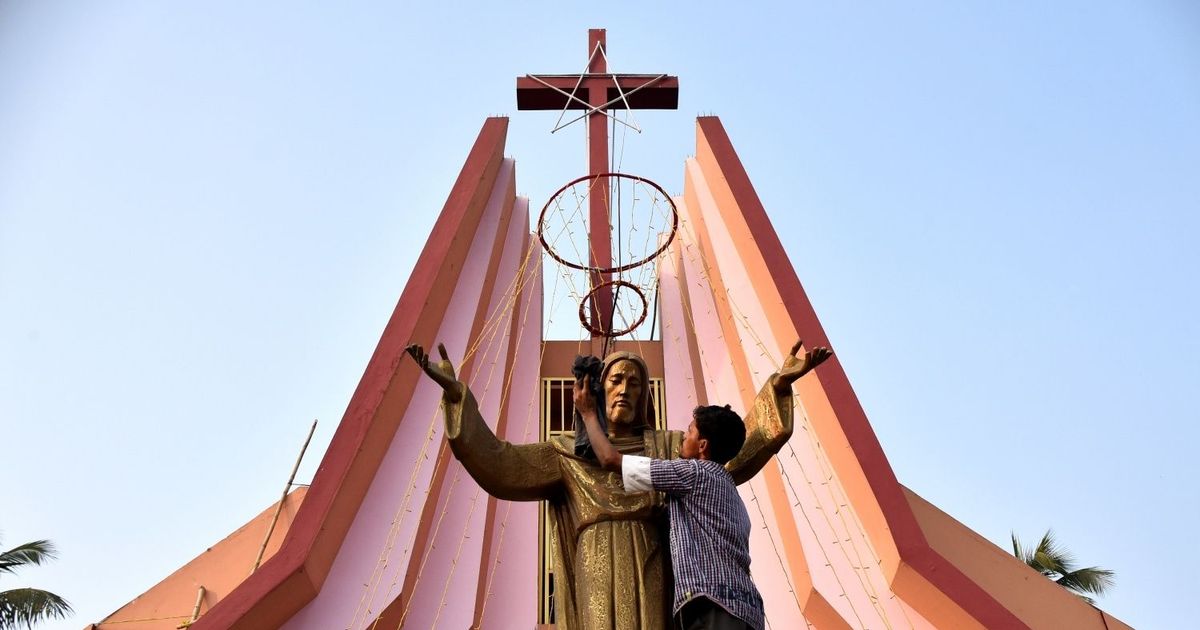
.jpg) Lancy Lobo
Lancy Lobo

In India, nationalism has been increasingly tied to religious demography. However, in recent years it has been observed that hysteria is being created that the Hindu population is going down and by 2050 the Muslims will outnumber the Hindus. Its implication is that in a ‘one man, one vote’ electoral system, the Muslims will capture power and Hindus will be reduced to a minority, thereby facing the threat of being treated as second class citizens just as they do with the present religious minorities.
This hysteria has been countered by well-known demographers like Visaria (2018), and Bhagat (2018), among others. But other demographers like Bajaj, Joshi and Srinivas, sympathetic to the Hindutva ideology, have been propagating that not only Hinduism but Hindus are in danger. This fear has existed since 1926 when it was articulated by Shraddhanand in his book “Saviour of Dying Race”.
The differential growth rate of religious communities has been a contested issue for a long time. Usually, the following causative factors are cited: 1) fertility rate and birth control 2) female education 3) sex-ratio 4) consumption rate and the class phenomenon 5) emigration and immigration, and 6) conversions.
Over the past few years, it has been observed that come elections and Christmas, the Christian missionaries are targeted for converting Hindus to Christianity. Last year, around Christmas time, Hindutva brigades vandalised, attacked, disrupted Christmas celebrations at several parts of India. They burnt the effigy of Santa Claus; Hanuman Chalisa was played by a few zealots in Kurukshetra on a stage set up for Christmas celebrations; a statue of Christ in the Ambala Cantonment church premises was vandalised; on Christmas day in Gurugram they stormed the stage during celebrations; in Silchar during Holy Mass they entered the church and shouted ‘sanatan dharamki jai’; in Mandya (Karnataka) they demanded to cease all festivities. Finally, to top the atrocities, the MHA presented a Christmas gift to Missionaries of Charity of Kolkata by its refusal to renew their FCRA (revoked later) and filing a FIR of alleged forced conversions against their Sisters in Vadodara, Gujarat.
Christian missionaries are often accused of conversions by fraudulent means, by enticement and a number of States have promulgated anti-conversion Acts, euphemistically called “Freedom of Religion Acts”. The latest example is Karnataka which passed the anti-conversion Bill when the State is preparing for elections.
The ground reality is that decennial census figures do not support an increase in Christian population in India. The census of 200l showed that Christians were only 2.3 per cent of the total population of India, and 2011Census figures showed the percentage to be the same. Statistics also show that the fertility rate of Christians is one of the lowest in the country, and there is no hard evidence that birth control is not practised by them. Female literacy is found to be higher than male, and as a whole the literacy rate among Christians is one of the highest. Christians are employed in the service sector proportionately more than any other community. Among the many out-migrating communities in India, Christians were found to be one too.
The Hindutva aversion to conversion feeds into hate politics and fear-mongering. Religious extremists, even as they make attempts to hide their own fears and negativity, do the greatest harm to their own religious tradition. Can we learn from our sub-continental neighbours or will we eventually become like them? Do we have the courage to turn the search within ourselves instead of finding scapegoats among the weaker minorities? Hindus are a minority in many countries where they live without hindrance and yet we hear the cries of "Hindu Phobia" in these countries. Will a backlash be provoked in some of these countries? Once again, will we have the courage and integrity to turn the searchlight within ourselves, or are we too afraid to look into the dark corners of our own soul?
The decennial census of 2021 has not yet taken place and preparations for it have not yet been announced. The question is if the regime is waiting for the implementation of the CAA and then go in for a census? It is a known fact that the regime is famous for playing with data not only demographic data but also in other domains, regarding employment, Covid deaths, and a host of other items. Aakar Patel in ‘The Price of Modi Years” has shown how during the last five years a number of indices have fallen such as human development, democracy, freedom of speech, women’s status, peace and security, prosperity, the gender gap, corruption, quality of life, and so on. For instance, Cato Human Freedom Index fell by 36 places from rank 75 in 2015 to 111 in 2020. It was found that the government is downplaying the status of these indices by saying that the methodology used was faulty, biased and not relevant to India! At the same time, it withholds the release of authentic data and releases data that is propagandist in nature.
The propaganda about alleged conversions has the same colour, that is, it is not authentic. The anti-conversion laws infantilise women, Dalits and tribals by treating them as children incapable of taking their own decisions in matters of religion. Moreover, these are forced to depend on the dominant castes, especially while vying for their individual votes. One of the biggest converters in recent history has been Baba Saheb Ambedkar who gave dignity and respect to lakhs of Dalits. Conversely, it can be said that if the Christians have been trying to use their institutions for conversions, then these institutions have been totally inefficient and ineffective as the number of Christians are declining.
In a multi-religious society conversion from one religion to another is bound to happen as the Constitution gives every citizen the right to profess, practice and propagate one's faith. Data reveals that people from every religion have converted to some other religion. Similarly, inter-religious marriages are a fact of life. Therefore, anti-conversion laws, that seek to ban religious conversions and inter-religious marriages, go against the spirit of the Constitution.
Every citizen has the right to change one's job or occupation, change one's residence and even change one's political party, as is being witnessed during the election season. If that be the case, why is a change of religion an anathema for Hindutvawadis? Unfortunately, the reality is that they see Hinduism, not as a religion, but as a political constituency that can be used for political mobilisation. Therefore, they need to generate this political constituency by creating a culture of hate against minorities. It has been proved many times over that the conversion bogey is an attempt to serve political ends and has nothing to do with religion, Hinduism or Christianity.
While making such false allegations against the Christians, the propagandists conveniently ignore the fact that there are many conversions taking place in the country other than religious conversions. For instance, the conversion rate of the rupee has gone down drastically during the BJP regime; the drastic downward conversion of employment; of the environment; of forests, land, water, air; and so on. Can our political parties concentrate on fighting these conversions rather than continue their false propaganda on the alleged religious conversions? With elections looming large in the horizon, the ‘conversion’ rate from one political party to another with allurements, greed, threat and fraudulent means is clearly visible. Are the people in power concerned about it?
(The writer is a research scholar at Indian Social Institute, Delhi. Email: drlancylobo48@gmail.com)